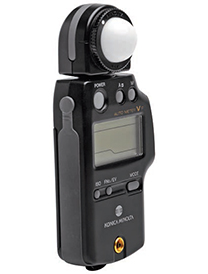 Tips on Posing
Tips on Posing
Though I have been doing photography for about three years, I am going to try taking portrait shots for the first time in my life. The lady is my friend’s sister and I am afraid I might botch up. Please give me some hints.
Pravin Kumar, Kolhapur
Pravin, there’s always a first time for everything. Think positively that you will succeed.
Since explaining how to take portraits would be beyond the scope of this write-up, I suggest that you take the help of the Internet and study some simple lighting techniques using available light and simple reflectors. Also check out how the model should pose. This will give you some courage to face the situation.
• It is important that you display confidence or else you will pass on the negative energy to the model. Your body language is important. If you show lack of confidence, she might think that she is wasting her time. Even if you do something wrong (like setting the reflector at a wrong angle), don’t let her see you being nervous. Being positive will boost your confidence level.
• Just to keep your mind at ease, realise that the lady could also be aware that you are new to taking portraits (her brother may have mentioned this to her); If I were you, I would tell her something like this… “Thank you for agreeing to pose for me. You know, I am a beginner in this genre and I am grateful to you for helping me out. I appreciate your help”. With a statement such as this, she will be mentally prepared in case the pictures don’t turn out the way they should.
(But this does not absolve you for not doing your homework to study how to go about the shoot).
Here are a couple of pointers from me:
• Two or three days before the shoot, scout around for a good location – a rustic village for example. It would help if you could involve a village elder to accompany you at the time of the shoot. With the village elder beside you, you are likely to have a better reception from the others in the village. Pose your subject near or in front of a home, at the entrance steps, next to a tree, in front of a decorative old painting (many villages have homes with nice paintings at the entrance) or any other location that seems comfy to you.
• Your subject need not be in bright sunlight at all times. Bright shade would do for a start. Then change the location – bring her in sunlight. We know that frontal lighting does not fare well as the lighting is ‘flat’, but keep in mind that the same frontal lighting is good for bringing out vibrant colours in her dress!
• Pose her so that the frontal sunlight falls on her face at aro und 60° angle. This would create a small shadow under her nose. This type of lighting is known as ‘butterfly lighting’ (also known as ‘glamour lighting’). Make sure that the nose shadow does not touch or cross the lip line and that there is a catch-light in both her eyes.
• Next, pose her so that she is backlit with the sun. Her face will be in a shadow. Use a white reflector (a 1 x 1.5meter Thermocol would do) to reflect some light back on her face.
• Try side-lighting. Let the sunlight hit her face from one side (it would be better if the light is falling on her face at an angle). Place the reflector on the shade side of her face. Vary the reflector-to- face distance between shots. This will provide different strengths of fillin light.
• Take many frames.
It is important that the model feels comfortable with you (and your assistants, if any). Her expressions will tell you if she is, or not. Always be polite, even if she is not able to pose as per your directions. Most ladies have a flair for posing, so for a few shots, let her pose the way she likes. Do nothing that will annoy her or discourage her; your duty is to bring out the best in her.
Using Flash Meter
I just bought a second-hand flash meter. It also reads daylight. In a studio situation, should the white dome be pointed at the camera or the studio light or inbetween the two?
Avinash Parekh, via email
Generally, an incident light meter is placed at the subject position and aimed at the camera. However, in a single-studiolight lighting, pointing the dome (the hemisphere) to the studio light can ensure that highlights will not be overexposed; so some photographers prefer this. The exposure difference between these two readings would generally be minimal – say 1/3 to 1/2 stop. By pointing the meter to the camera position, you would get a bit more shadow detail, but in theory at least, you could have a slight overexposure of the highlights. Which method to use is quite personal; you will see the difference and may be use an in-between exposure – which would be equal to pointing the dome in-between the light source and the camera.
When more than one light source is used, I would point the incident light meter to the camera position. |SP

